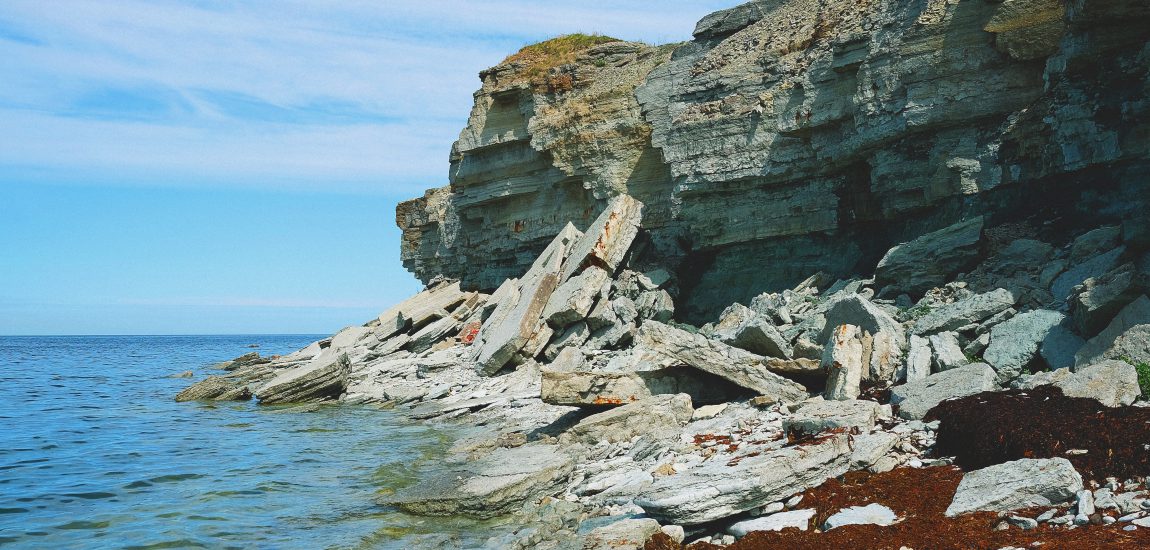
Rock archive: How rocks can tell us about the Earth’s past
The main tool in reconstructing Earth’s environmental history is – rocks! In order to explore the ‘rock archive,’ we must first understand what kind of stories different types of rocks can tell us!
What is a rock?
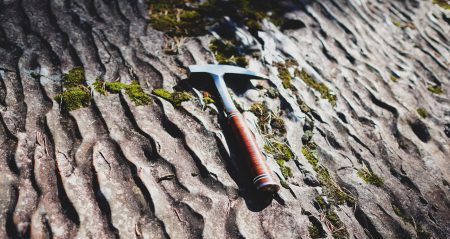
Rocks are aggregates of smaller natural materials, such as minerals or other solids (e.g. volcanic glass), which can be biogenic (based on life) or abiogenic (not produced by life) in origin (Figure 2). A rock can include one or several types of minerals that are composed of chemical compounds that were present in the solution (e.g. water) from which they precipitated (precipitation: when dissolved materials come out of water). As chemical composition, crystal shape, and size of a mineral depend on the chemical and physical conditions at which they are formed, different types of minerals can be linked to specific environmental conditions. Given that minerals are the simplest unit that makes up a rock, the mineral assemblage of rocks can reveal information about the setting and processes involved in its creation.
Example of a rock: Limestones!
Limestones are composed mainly of calcite, a calcium carbonate (CaCO3) mineral. In its dissolved form, calcium carbonate is abundant in modern oceans, but in order for it to precipitate as a solid mineral, a set of conditions has to be met. The principal way to precipitate calcite from seawater involves biology (Figure 4). Various marine organisms use calcite to make their skeletons and shells, which upon their death, fall onto the seafloor, and are buried and compacted into sedimentary rock. However, there is a catch: Calcite can be easily dissolved and the skeletal fragments and grains might never reach the seafloor. Additionally, the habitats of those marine organisms control limestone deposition to specific geographic regions. Due to the constraints on limestone formation, its occurrence or absence in the geologic record tells us about the climatic and geographic conditions at that time.
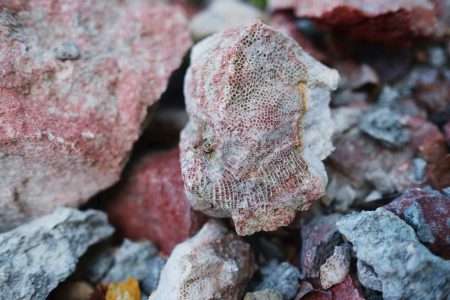
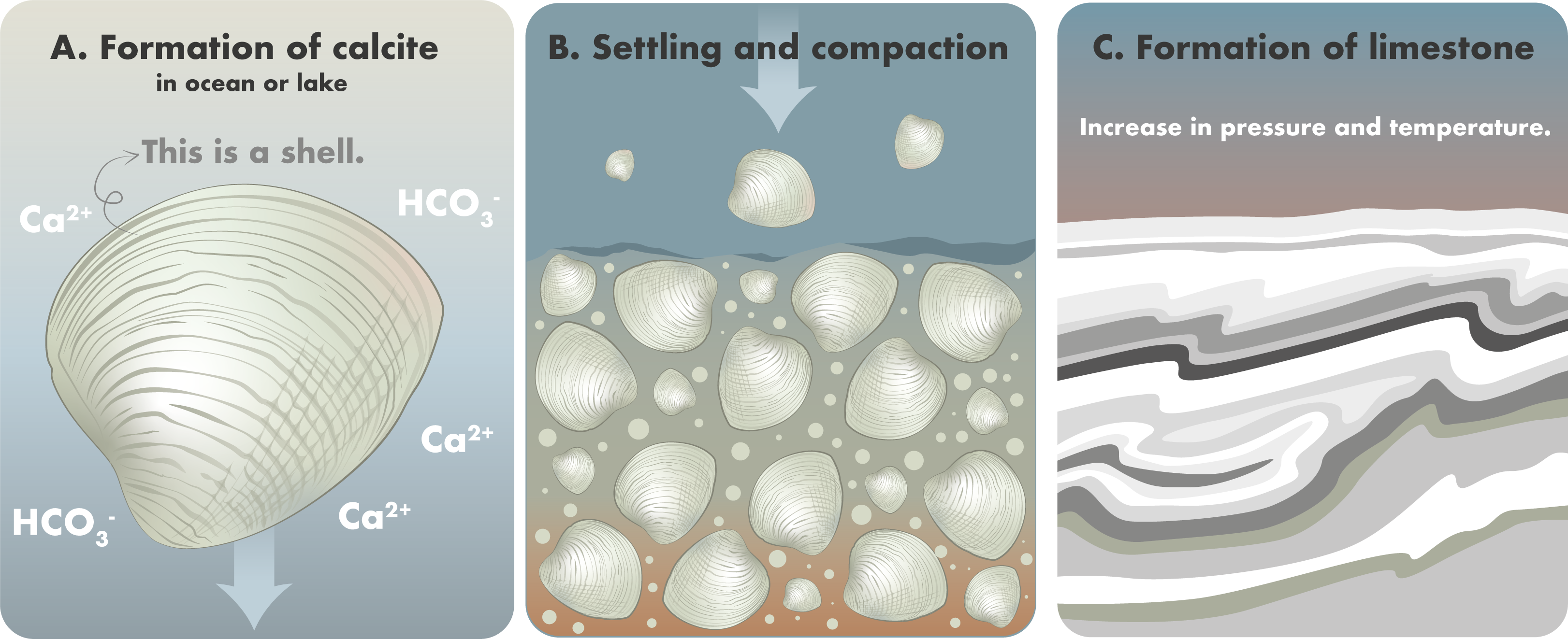
The rock cycle
There are numerous other types of rocks, not just limestones, that reveal information about the Earth’s surface environments or reflect its interior. Based on the chemical and physical processes that create and transform materials on Earth, rocks are lumped into three main categories: sedimentary, metamorphic, and igneous. Over very long time scales the different rock types are connected through a series of transformations as they undergo erosion, compaction, melting, cooling, and solidifying, which ultimately make up the rock cycle (Figure 5).
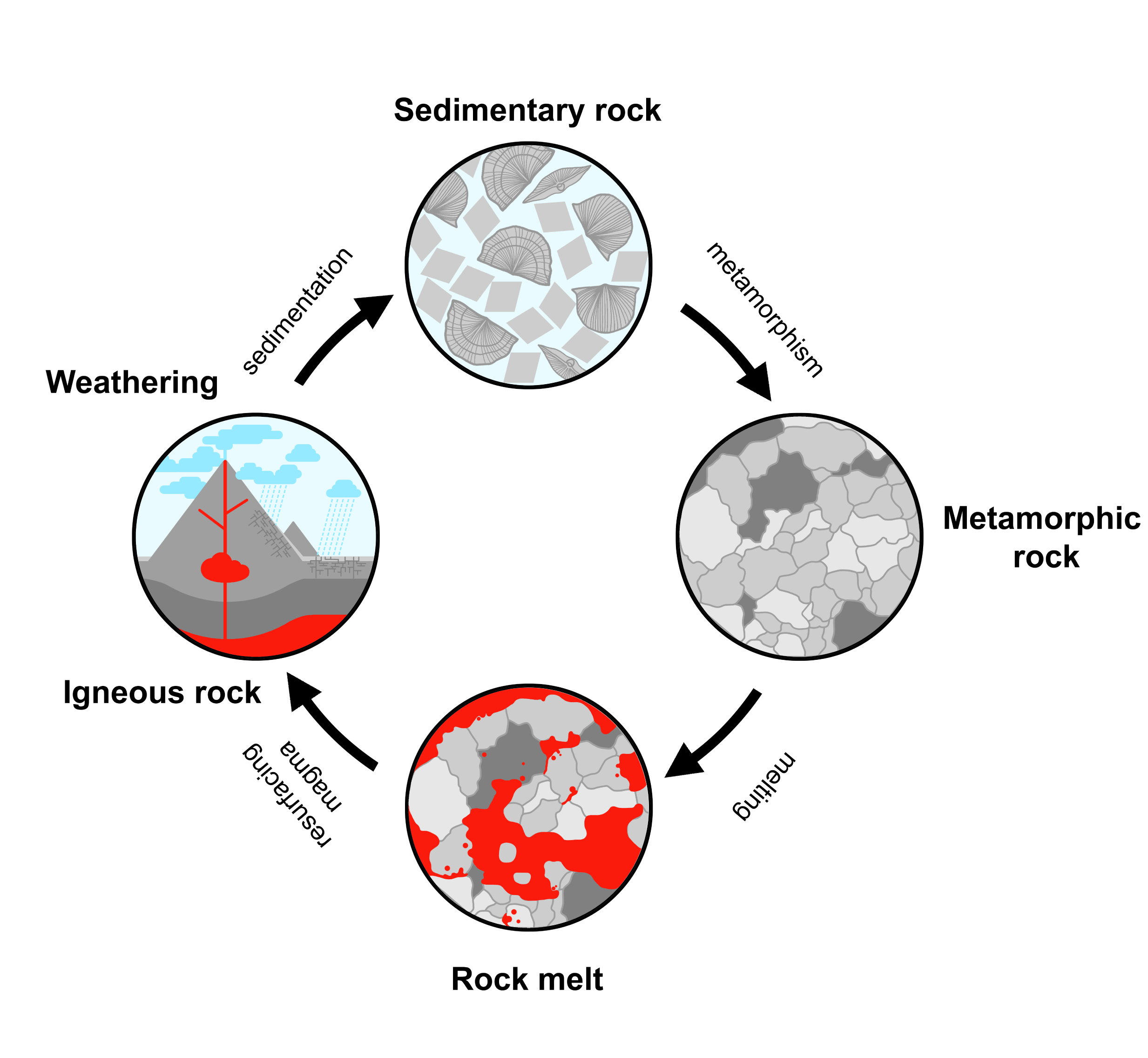
Take the limestone as an example: if it happened to form in a tectonically active environment, like in a mountain building region, it will be subject to increased temperature and pressure in the Earth’s crust and compressed into marble – a metamorphic rock. During the transformation of precursor limestone to marble, the initial calcite grains will start to grow together into an interlocking mosaic of calcite crystals. As the size of the crystals increase, any empty pore spaces will be filled, and the rock gains develop a sugary appearance; a process which is called re-crystallization. This process modifies or destroys fingerprints of the environmental signals that were once present in the precursor limestone. Consequently, the resulting marble will obtain a chemical signature and physical appearance that is unrelated to sedimentary processes but reflects those that associate with metamorphism.
If sedimentary or metamorphic rocks are subjected to even more heat or pressure, they can start to melt. One way to melt sedimentary rocks is by increasing pressure and temperature by forcing one block of Earth’s crust to go beneath another (i.e. subduction) as the two collide. In such conditions, the subducted rocks will start to melt and produce magma, a molten fluid, that rises towards the surface. The ascending magma intrudes into the overlying crust, where it can form a chamber of molten magma or break the surface in a volcanic eruption. Either way, the magma will cool and solidify into an igneous or volcanic rock that carries chemical and physical characteristics related to processes involved with the Earth’s interior. Eventually the igneous rocks will make it to the Earth’s surface, where it will be weathered and eroded, and its remnants will be delivered back into the ocean as solid or dissolved particles. Ultimately, the igneous rocks will be modified by biogenic and abiogenic processes on the Earth’s surface and converted back into sedimentary rocks, repeating the rock cycle all over again!
About the authors

Kärt Paiste
Kärt is originally from Pärnu, Estonia. She is currently an MSCA postdoctoral fellow at Washington University in St Louis, where she investigates the uncertainties under which biogeochemical sulfur cycling occurred at critical junctions in Earth’s history. In addition to her research work, she engages with K–12 schools via outreach activities (i.e., European Researchers Night, Back to School program, WashU’s SciZoom) and works with high school students on mentored research projects (WashU STARS) to increase diversity and encourage participation in STEM fields. To raise awareness and address racism in geoscience, she is an Unlearning Racism in Geoscience pod member at WashU (URGE).
Ichiko Sugiyama
Ichiko is originally from Tokyo, Japan, and is a Ph.D. student at the Weizmann Institute of Science investigating the role of iron minerals in regulating metal and nutrient budgets in ancient oceans. She is passionate about communicating science to the public in all STEM fields and contributes by volunteering for different organizations (EAG, EGU, GSA, SEG, etc.). As part of her outreach and DEI work, she has mentored K-12 educators, undergraduate and graduate students in North American and in the Middle East. To find out more about Ichiko, please visit her website.

